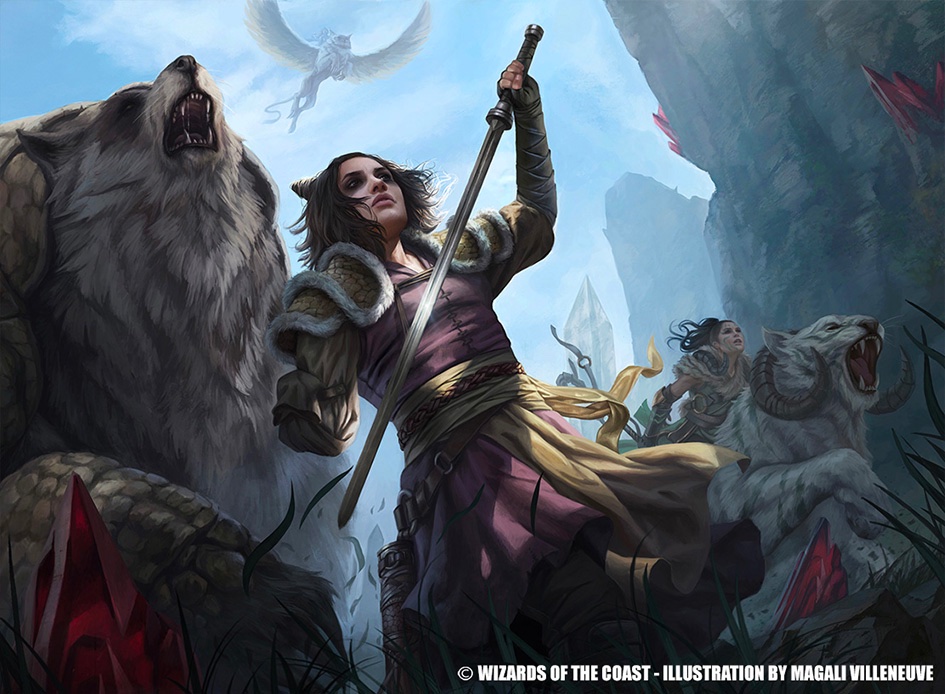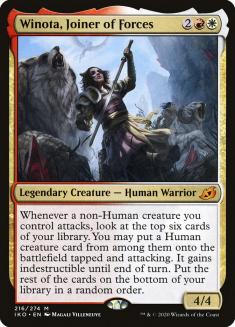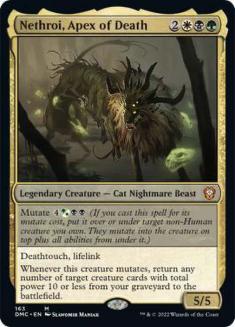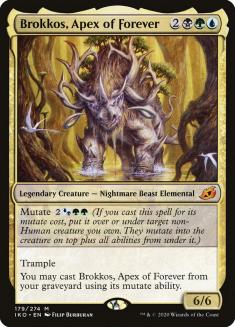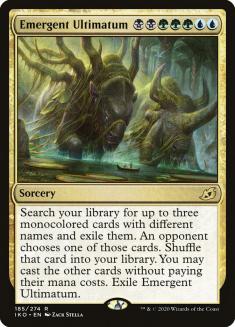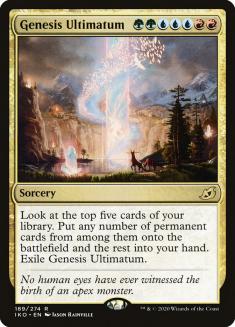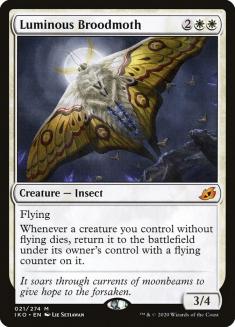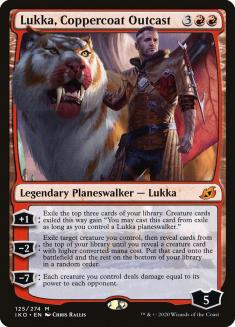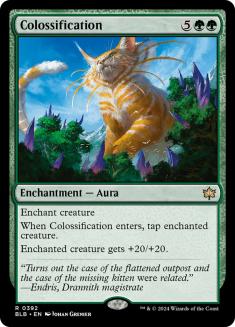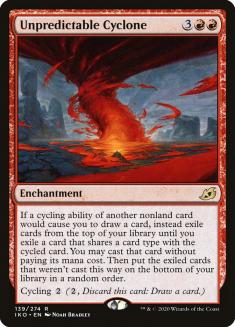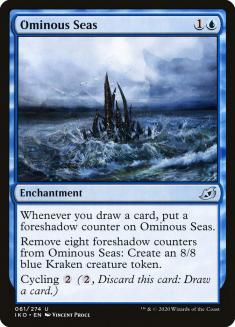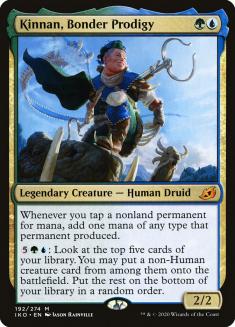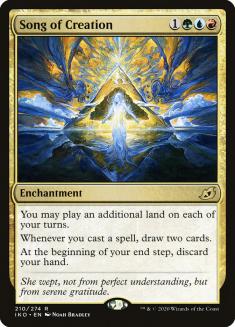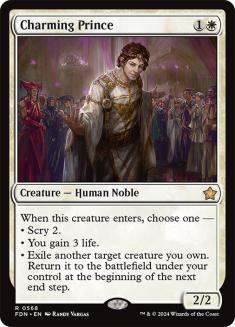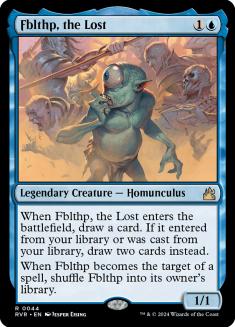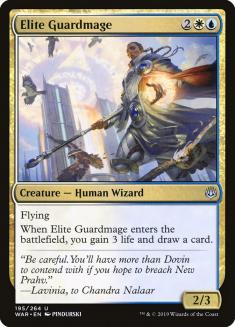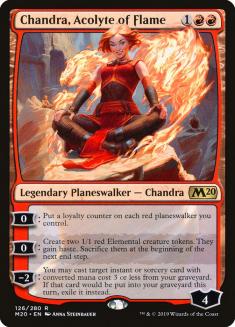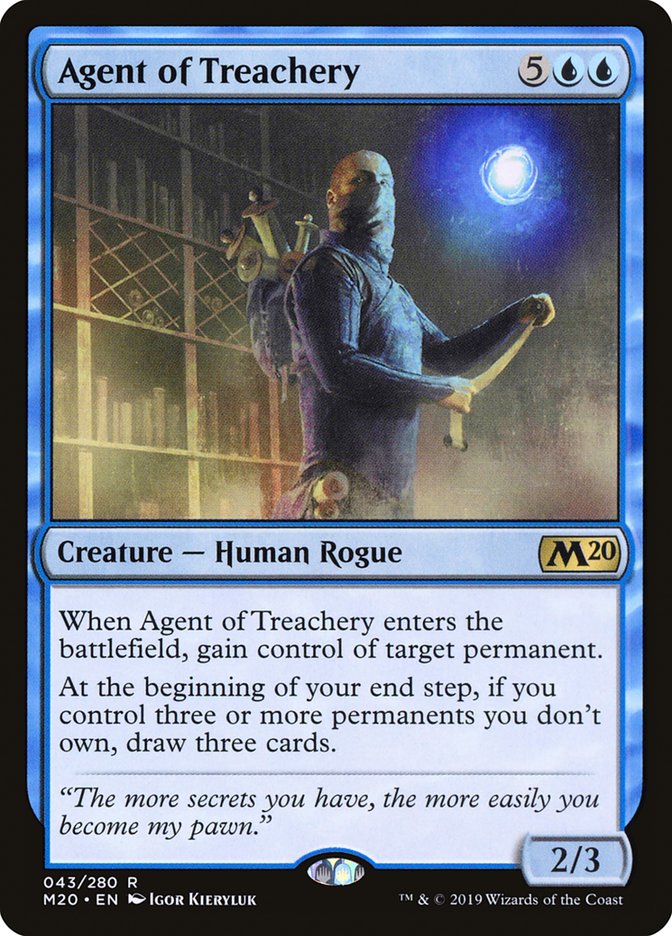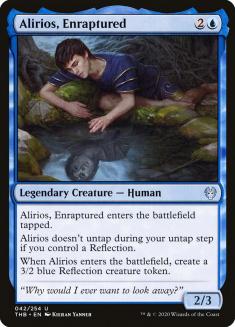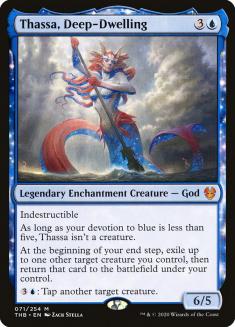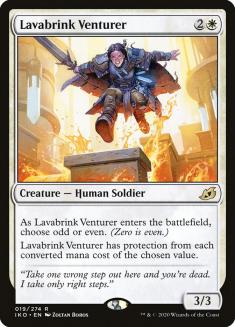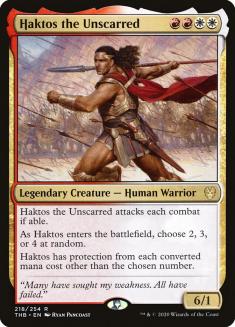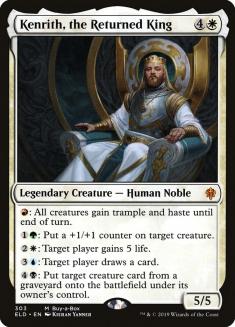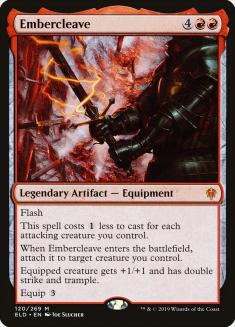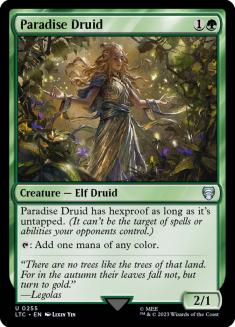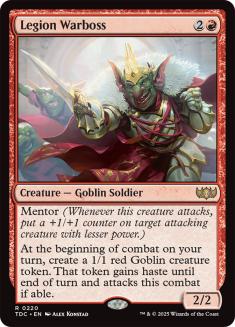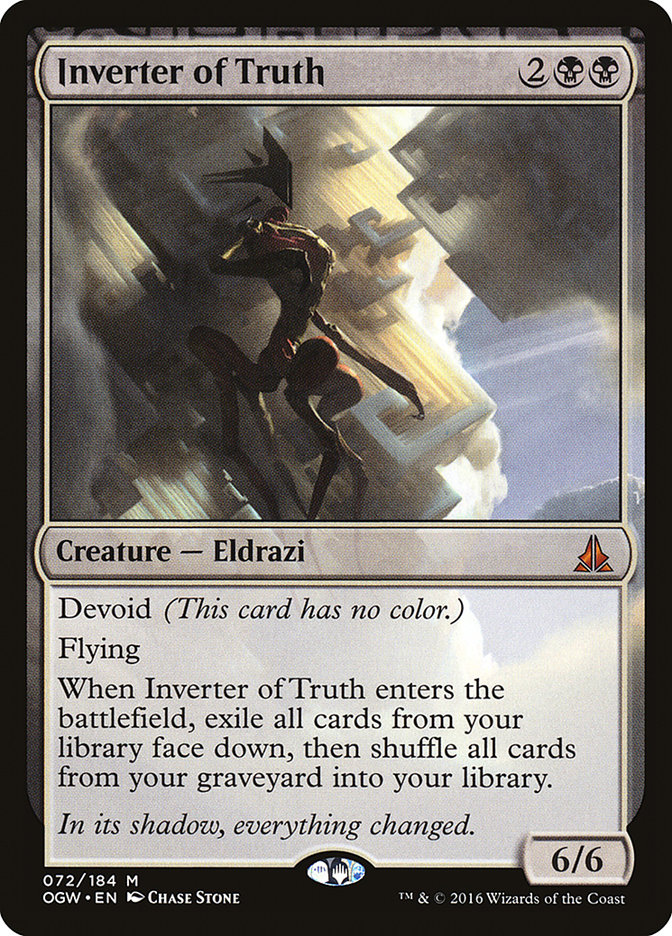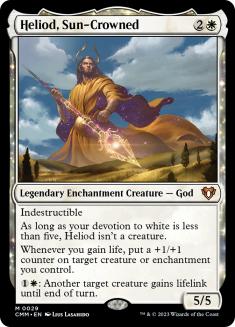Ikoria: Lair of Behemoths has more build-arounds than any set in the history of Magic. How wild is that? Admittedly, the companion mechanic is a large part of why this is, but even looking past those cards, just look at how many rares, mythics and others all scream to have 56 more cards build with them in mind?
….and that really only touches on about half the cards in this set that want to find themselves in a deck dedicated to making them work.
With all of these cards, being flexible in the brewing process is paramount, and Winota, Joiner of Forces does a great job of illustrating that there are several ways to build around the same engine.
The Card
On its face, there are a few things worthy of note when evaluating the hurdles that have to be cleared in order for Winota to actually have a text box.
- There have to be non-Human creatures that are able to attack.
- There have to be Humans that are worth investing four mana and another resource (the attacker) into generating.
From there, the card’s more versatile than one would assume. That’s rooted in the fact that her ability has two parts of its payoff that can be focused on:
- It helps cheat on mana by immediately putting cards onto the battlefield.
- The creatures that it puts onto the battlefield are automatically tapped and attacking.
These incentivize two different kinds of cards to be put into decks. From there, it’s academic to extrapolate that there are multiple ways to build the same deck. For example, the first place that most people have leaned with Winota is an archetype not entirely dissimilar from last Standard’s Azorius Blink:
Creatures (25)
- 2 Fblthp, the Lost
- 4 Elite Guardmage
- 4 Agent of Treachery
- 4 Charming Prince
- 4 Bonecrusher Giant
- 3 Alirios, Enraptured
- 4 Winota, Joiner of Forces
Planeswalkers (3)
Lands (27)
Spells (5)
Sideboard

There’s a lot going on in this list, but, it highlights one of the ways to lean into build-arounds.
This deck has a handful of cards that provide velocity while simultaneously working as synergy pieces with the deck’s namesake. These are the kind of cards that are necessary whenever a deck like this really needs the card it’s built around in order to function.
That’s to say that this particular list has a bunch of cards that aren’t the most powerful things to be doing at their mana costs in Standard, but Winota makes them worth it.
Nobody is arguing that Raise the Alarm and Chandra, Acolyte of Flame are absolutely bananas, right? The purpose of these cards is specifically to generate multiple triggers the turn that Winota enters the battlefield. That way, the deck isn’t relying on untapping with a protection-less creature in order to get paid.
Agent of Treachery is the real payoff card that people have gravitated towards with Winota. It’s the most expensive Human in the format and has an incredibly swingy, game-ending ability that isn’t frequently given to proactive creature decks.
The real catch with Agent of Treachery in these kinds of decks is that it flies in the face of the cards that enable Winota. Raise the Alarm and Agent of Treachery aren’t exactly cards that look like they should be next to one another on a decklist.
That’s exactly the reason that the aforementioned velocity is necessary in this iteration of the Winota deck. Building decks like this with different payoffs and enablers is an exercise in recognizing what cards can check both boxes.
I’ve already talked a bit about why Charming Prince works to develop the combo-esque turns in the deck, and its status as a Human is apparent, but Alirios is less obvious. The card working to generate a non-Human body on Turn 3 is perfect for Winota turns, but it’s also a Human that Winota can hit.
On top of all of that, Charming Prince plays a role here, in that it can blink Alirios when its hit off Winota, generating more creatures to enable the leading lady in future combat steps.
The choice of Chandra, Acolyte of Flame may raise a few eyebrows, specifically for it being included over Legion Warboss, which both has higher upside with Winota and is a more punishing card in general.
Chandra’s biggest draw is that she’s much stronger in sideboard games. This is a product of Winota’s need for several different kinds of cards for her to function. The deckbuilding constraints that she creates means that it’s hard to lean into too many cards that would dilute the deck – removal or other forms of interaction, for example. Chandra does a ton of heavy lifting in this department, duplicating powerful interactive sideboard cards like Aether Gust and Devout Decree while also serving as a synergy piece in the deck itself.
The secondary motivator for including Chandra over Warboss is that Chandra is better in games against opponents who are good at playing against creatures. It dodges sweepers and can produce creatures the same turn that Winota hits the battlefield. This makes it harder to prevent Winota from actually triggering, even if the ceiling on Chandra’s upside is lower than the Goblin’s. It’s actually a great bridge into the concepts of what win-mores are in decks during the brewing process.
Aim for Functionality Instead of Swinging for the Fences
Thassa, Deep-Dwelling is a great example of a card that was prominent in previous iterations of blink decks, yet doesn’t quite fit in this one. Why? It requires your deck to already be working.
In today’s Magic world, most decks are doing something that’s powerful enough if it can simply do its thing. This makes cards that won’t have much upside without the deck already firing on all cylinders not particularly valuable.
That isn’t to say these cards never have a place –Thassa has seen plenty of play before this, after all. But in a deck that’s going to struggle to hit five devotion and only has a handful of valuable enters-the-battlefield effects below Thassa on the curve, it’s hard to justify a four-mana spell that is neither an enabler nor a payoff for the centerpiece of the deck.
That isn’t to say these cards are completely unjustifiable, but it mostly boils down to how many cards are in the deck that will be close to nonfunctional when drawn. When the Jeskai iteration of Winota already has Agent of Treachery as a sort of dead draw in the developmental stages, adding more cards in that vein is a tough pill to swallow.
The times when you can have pieces of tech that demand the deck already be functioning are when the deck itself is more self-sufficient without its focal card:
Creatures (32)
- 4 Legion Warboss
- 3 Tithe Taker
- 4 Paradise Druid
- 2 Kenrith, the Returned King
- 4 Bonecrusher Giant
- 4 Haktos the Unscarred
- 3 Bronzehide Lion
- 4 Lavabrink Venturer
- 4 Winota, Joiner of Forces
Lands (25)
Spells (3)

Here’s a deck that makes use of the other thing Winota abuses: creating an attacker.
The Humans that serve as payoff cards in the Naya version of the Winota deck are incredible at getting damage across, and the deck is built to accommodate both of these cards in their curve when drawn. The fact that this deck’s normal curve is more feasible without Winota means that it has room for something that relies on the deck functioning in order to have value:
Singing the praises of Embercleave in aggressively slanted midrange decks is old hat, but its power level lets it make the cut despite not being part of what’s important with Winota. When building decks like these, it’s a tricky balance between avoiding being a slave to your theme and having enough cards that fit said theme in order to have a functioning deck.
This Naya deck has fewer Humans than its Jeskai counterpart, so it’ll have a lower hit rate. It makes up for that by generating a bunch of efficient, non-Human bodies that plan on attacking in order to trigger Winota three or more times in the same combat step. This makes it less likely to have a singular game-ending card a la Agent of Treachery but more capable of generating a battlefield that’s powerful enough to simply overwhelm what resources the opponent has available.
In several respects, Paradise Druid does for Naya what Charming Prince did for Jeskai. It smooths out the curve of the deck, cranking out Turn 3 Haktos and fixing a shaky manabase while also acting as an enabler for Winota and Embercleave.
In a deck that’s pointedly trying to be aggressive, Legion Warboss gains a ton of value – a good chunk of which is rooted in the fact that the deck is a go-wide aggro strategy. This means that effectively blocking Legion Warboss and its tokens isn’t a given in the same way that it is against the less proactive blink deck.
Ultimately, this deck feels more like an aggro deck that’s built with Winota in mind, rather than one that’s built to absolutely abuse Winota in every game that it plays.
Finding Middle Ground
When married to a specific card or strategy, brewing becomes a game of finding the balance between combo pieces and freestanding role-players. Neither direction is inherently better or worse, and the best approach will vary on a case-by-case basis.
The way to frame if a card lends itself more to a fair strategy or a combo deck is to consider how reliant the card is on its enablers and how specific those enablers have to be in order to function in the deck.
Inverter of Truth, for example, more or less demands its caster jump through some hoops to be playable at all in the first place. This means that the decks it’s a part of will slant more in the combo direction, rather than the fair one.
Heliod, Sun-Crowned finds itself in a different spot on the spectrum. Despite it having the ability to combo with a Walking Ballista, it also sees significant play in contexts that just use it as an aggressive tool. That’s because it isn’t reliant on specific kinds of cards in order to be powerful, it simply works with most creatures.
Winota is an example of a card that falls closer to the Heliod side of things than the Inverter side, even if there isn’t a backdoor-infinite-damage combo that plays with her. These are the hardest, yet most rewarding, cards to find shells for. Considering the fact that most all creatures are going to fall into either the Human or non-Human camp, it’s hard to imagine a world that doesn’t include a playable Winota shell in the future.
As more cards get printed, there will be even more enablers and payoffs for her to exploit.

